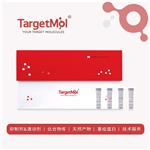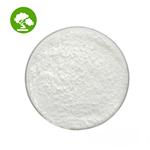Chemical Properties
| form | Liquid |
| color | Colorless to light yellow |
| FDA UNII | 3A189DH42V |
| NCI Dictionary of Cancer Terms | alemtuzumab |
| NCI Drug Dictionary | alemtuzumab |
| ATC code | L04AA34 |
Safety
| Hazardous Substances Data | 216503-57-0(Hazardous Substances Data) |
Alemtuzumab Chemical Properties,Usage,Production
Description
Alemtuzumab was first introduced in the US for the treatment of B-cell chronic lymphocytic leukemia (CLL) in patients who have been treated with alkylating agents and have failed fludarabine therapy. Alemtuzumab is a humanized monoclonal antibody of the IgG1 isotype specific for the glycoprotein CD52 expressed on the cell surface of over 95% of normal and malignant B and T lymphocytes and monocytes. It was genetically engineered by adding six hypervariable regions from the heavy-chain and light-chain variable domains of an IgG2a rat monoclonal antibody onto a human IgG1 immunoglobulin molecule. The exact mechanism of action of alemtuzumab is unknown but the antibody probably causes the lysis of lymphocytes via complement fixation and antibody-dependent cytotoxicity. In a phase III clinical trial with 93 fiudarabine-resistant CLL patients, treatment with alemtuzumab gave a positive response in 31 patients with 2 complete remissions and 29 partial remissions. This study demonstrated a higher response rate in patients having malignancy confined to the blood and bone marrow. Alemtuzumab does not seem to penetrate well into solid tissues and it was found to be concentrated in the blood which seems to correlate with the fact that it appears to be inefficient against tumor cells from lymph nodes and extranodal masses. The half-life of the antibody ranged between 23 and 30 hours. Premedication with acetaminophen and diphenhydramine is effective in reducing infusion-related reactions such as fevers, rigors, rash, nausea or hypotension. The most significant adverse effect is lymphopenia resulting in increased risk of opportunistic infections. As a consequence, prophylactic treatment with antibiotics is recommended for patients under alemtuzumab therapy.Originator
Cambridge University (UK)Uses
Antineoplastic (monoclonal antibody).brand name
Campath (Boehringer Ingelheim KG, Germany).General Description
Alemtuzumab (Campath) is humanized MAb (Campath-1H)that is directed against the 21- to 28-kDa cell surface glycoproteinCD52. CD52 is expressed on the surface of normaland malignant B and T lymphocytes, NK cells, monocytes,macrophages, and tissues of the male reproductive system.The Campath-1H antibody is an IgG1 κ form with humanizedvariable and constant regions and CDRs from a ratMAb, Campath-1G.Alemtuzumab is indicated for the treatment of B-cellchronic lymphocytic leukemia in patients who have beentreated with alkylating agents and who have failed on thistherapy. Alemtuzumab binds to CD52, a nonmodulating antigen that is present on the surface of essentially all B andT lymphocytes; most monocytes, macrophages, and NKcells, and a subpopulation of granulocytes. The proposedmechanism of action is antibody-dependent lysis ofleukemic cells following cell surface binding.
Clinical Use
Treatment of chronic lymphocytic leukaemia (CLL) not totally responsive to other treatment
Induction therapy in renal transplantation
Treatment of relapsing remitting multiple sclerosis (MS)
Drug interactions
Potentially hazardous interactions with other drugsOther chemotherapy: do not give within 3 weeks of each other.
Live vaccines: avoid for at least 12 months after treatment.
Metabolism
The metabolic pathway of alemtuzumab has not been elucidated. Clearance decreases with repeated administration due to decreased receptor mediated clearance (loss of CD52 receptors in the periphery).Preparation Products And Raw materials
Alemtuzumab Supplier
Global(55)Suppliers
| Supplier | Tel | Country | ProdList | Advantage | |
|---|---|---|---|---|---|
| +undefined18602966907 | qinhe02@xaltbio.com | China | 997 | 58 | |
| +1-781-999-5354 +1-00000000000 |
marketing@targetmol.com | United States | 32161 | 58 | |
| +8615604608665 15604608665 |
dominicguo@gk-bio.com | CHINA | 9414 | 58 | |
| +8615056975894 | shawn@hirisunpharm.com | CHINA | 9911 | 58 | |
| support@targetmol.com | United States | 38631 | 58 | ||
| +86-852-30606658 | market18@leapchem.com | China | 43340 | 58 | |
| 1-(800)-881-8210 | inquiries@lgmpharma.com | United States | 2123 | 70 | |
| 027-59207852 13308628970 |
buy@fortunachem.com | China | 2859 | 58 | |
| 0411-62910999 13889544652 |
sales@meilune.com | China | 4727 | 58 | |
| 025-57798810 | sales@sunlidabio.com | China | 3239 | 55 |
216503-57-0, AlemtuzumabRelated Search
PROMPT×
PROMPT
The What'sApp is temporarily not supported in mainland China
The What'sApp is temporarily not supported in mainland China
Cancel
Determine

